
FROM Chichester, the road, lying still west, passes in view of the Earl of Scarbrough’s fine seat at Stansted, a house, seeming to be a retreat, being surrounded with thick woods, thro’ which there are the most pleasant, agreeable, vistas cut, that are to be seen anywhere in England… [those that] sit in the dining room of the house… see the town and harbour of Portsmouth, the ships at Spithead, and also at Saint Helens; which, when the royal navy happens to be there, as often happen’d during the late war, is a most glorious sight.’ Much has changed to the setting of Stansted Park since Daniel Defoe visited in 1722, but the richly wooded landscape and spectacular views—which are central to the deep and fascinating history of the site—remain (Fig 1).
The story of the house can be traced back in the documentary record to the 12th century and the death of William d’Albini, Earl of Arundel, in 1176. In that year, the Earl’s landed possessessions, including Stansted, came into the hands of Henry II. There is no previous reference to a residence, but one must have existed because, in 1177, the King spent a week here. He also evidently enjoyed the hunting because, in 1178–81, the Pipe Rolls record the expenses of his falconers at Stansted and, then, between 1181 and 1184, the very substantial expenditure of more than £125 on the King’s ‘new chamber’, kitchen and ‘house’. His sons, Richard I and John, likewise made recorded visits, but, in the 13th century, Stansted reverted to the possession of the Fitzalan Earls of Arundel.
This story is from the {{IssueName}} edition of {{MagazineName}}.
Start your 7-day Magzter GOLD free trial to access thousands of curated premium stories, and 9,000+ magazines and newspapers.
Already a subscriber ? Sign In
This story is from the {{IssueName}} edition of {{MagazineName}}.
Start your 7-day Magzter GOLD free trial to access thousands of curated premium stories, and 9,000+ magazines and newspapers.
Already a subscriber? Sign In

Save our family farms
IT Tremains to be seen whether the Government will listen to the more than 20,000 farming people who thronged Whitehall in central London on November 19 to protest against changes to inheritance tax that could destroy countless family farms, but the impact of the good-hearted, sombre crowds was immediate and positive.
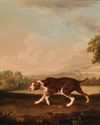
A very good dog
THE Spanish Pointer (1766–68) by Stubbs, a landmark painting in that it is the artist’s first depiction of a dog, has only been exhibited once in the 250 years since it was painted.

The great astral sneeze
Aurora Borealis, linked to celestial reindeer, firefoxes and assassinations, is one of Nature's most mesmerising, if fickle displays and has made headlines this year. Harry Pearson finds out why
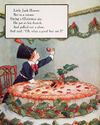
'What a good boy am I'
We think of them as the stuff of childhood, but nursery rhymes such as Little Jack Horner tell tales of decidedly adult carryings-on, discovers Ian Morton

Forever a chorister
The music-and way of living-of the cabaret performer Kit Hesketh-Harvey was rooted in his upbringing as a cathedral chorister, as his sister, Sarah Sands, discovered after his death

Best of British
In this collection of short (5,000-6,000-word) pen portraits, writes the author, 'I wanted to present a number of \"Great British Commanders\" as individuals; not because I am a devotee of the \"great man, or woman, school of history\", but simply because the task is interesting.' It is, and so are Michael Clarke's choices.

Old habits die hard
Once an antique dealer, always an antique dealer, even well into retirement age, as a crop of interesting sales past and future proves
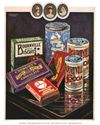
It takes the biscuit
Biscuit tins, with their whimsical shapes and delightful motifs, spark nostalgic memories of grandmother's sweet tea, but they are a remarkably recent invention. Matthew Dennison pays tribute to the ingenious Victorians who devised them
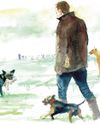
It's always darkest before the dawn
After witnessing a particularly lacklustre and insipid dawn on a leaden November day, John Lewis-Stempel takes solace in the fleeting appearance of a rare black fox and a kestrel in hot pursuit of a pipistrelle bat
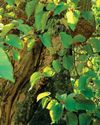
Tarrying in the mulberry shade
On a visit to the Gainsborough Museum in Sudbury, Suffolk, in August, I lost my husband for half an hour and began to get nervous. Fortunately, an attendant had spotted him vanishing under the cloak of the old mulberry tree in the garden.